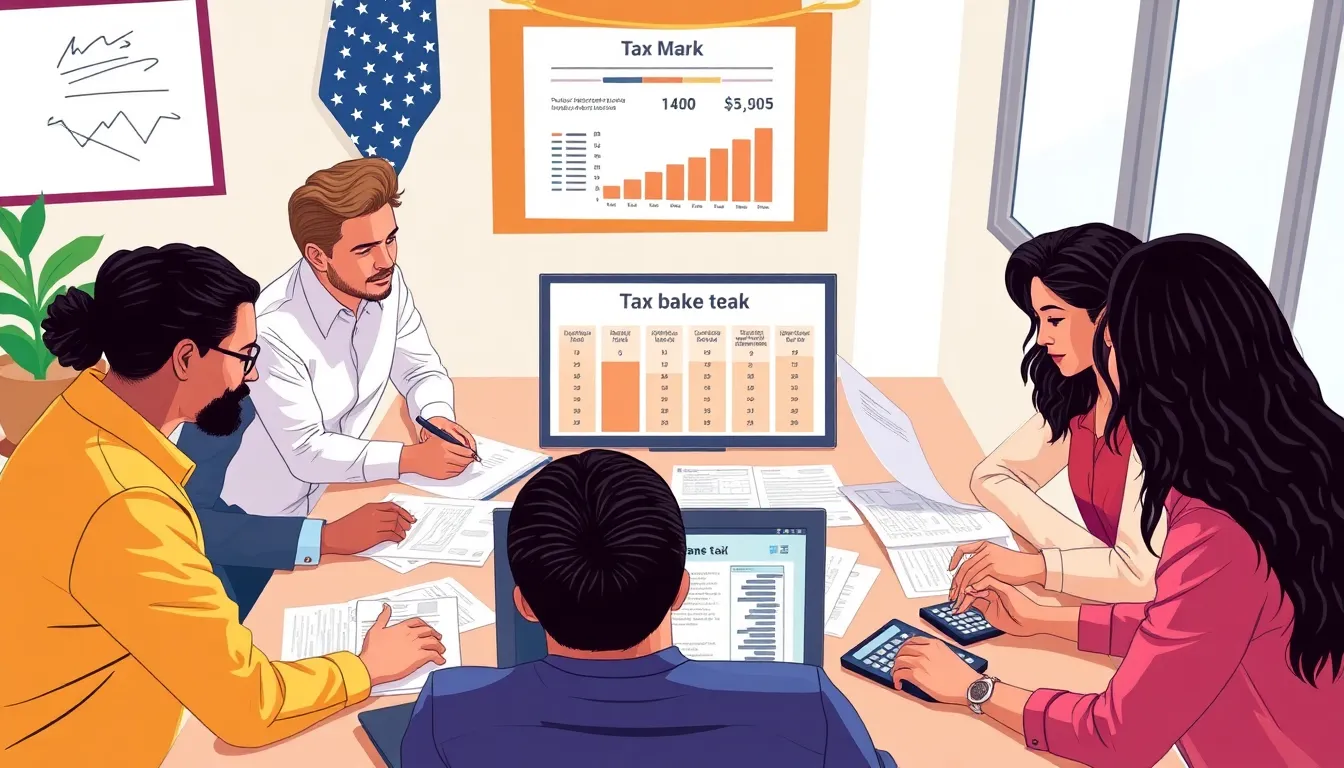Navigating the world of taxes can feel like trying to solve a Rubik’s Cube blindfolded. Just when you think you’ve got it figured out, a new twist appears. Understanding tax brackets is essential for anyone looking to keep more of their hard-earned cash, but let’s be honest—it’s about as exciting as watching paint dry.
But fear not! Tax bracket insights don’t have to be a snooze fest. With a sprinkle of humor and a dash of clarity, this article will break down the complexities of tax brackets, making them as easy to digest as your favorite slice of pizza. So grab a cup of coffee and get ready to learn how to maximize your tax strategy while keeping a smile on your face. After all, who said taxes can’t be fun?
Table of Contents
ToggleUnderstanding Tax Brackets
Tax brackets determine how much individuals pay in taxes based on their income level. Recognizing the details can help taxpayers navigate their financial responsibilities.
What Are Tax Brackets?
Tax brackets represent income ranges that dictate tax rates. The Internal Revenue Service categorizes income into different levels, each with a specific tax percentage. For 2023, there are seven federal tax brackets, ranging from 10% to 37%. Individuals earning between $0 and $11,000 fall in the 10% bracket. Those with incomes between $11,001 and $44,725 fall into the 12% bracket. Higher income levels attract progressively higher rates. Understanding these categories aids in anticipating tax liabilities and maximizing deductions.
How Tax Brackets Work
Tax brackets function on a progressive tax system. This means individuals pay varying rates on different portions of their income. For example, a taxpayer earning $50,000 does not pay a flat rate; instead, their income is taxed in segments. The first $11,000 is taxed at 10%, the income between $11,001 and $44,725 at 12%, and the remaining amount at 22%. As income increases, so does the percentage owed on the excess income. Taxpayers can strategically plan to optimize deductions, credits, and withholdings based on their tax bracket.
Current Tax Bracket Structure

Tax brackets define individuals’ tax responsibilities based on income. In 2023, the Internal Revenue Service establishes seven federal tax brackets, with rates spanning 10% to 37%.
Overview of Tax Rates
Taxpayers face varying rates for different income segments. Individuals owe 10% on the first $11,000. Income between $11,001 and $44,725 incurs a 12% tax, while 22% applies to earnings from $44,726 to $95,375. As earnings increase, higher rates impact the amounts above each threshold. The progressive tax system ensures a fairer distribution of tax burdens, allowing those with higher incomes to contribute more. Knowing these rates helps taxpayers assess their potential liabilities and strategize tax planning.
Changes in Tax Brackets Over Time
Tax brackets evolve due to inflation and policy adjustments. Historical changes often reflect economic realities and government objectives. For example, recent years saw shifts aiming to alleviate tax burdens on middle-income earners. The 2017 Tax Cuts and Jobs Act notably adjusted rates, lowering the income threshold for certain brackets. Examining past brackets reveals trends in tax policy and its effects on various income levels. Future adjustments may depend on economic conditions, necessitating ongoing awareness of personal tax situations.
Impact of Tax Brackets on Individuals
Tax brackets significantly affect individuals by shaping tax responsibilities based on their income levels. The federal tax system utilizes a progressive structure, meaning effective tax rates increase as earnings rise.
Tax Bracket and Your Income
Income directly impacts tax brackets. Taxpayers in lower brackets pay lower rates while those in higher brackets face increased tax percentages. For example, someone earning $50,000 falls within multiple brackets, paying 10% on the first $11,000, then 12% up to $44,725, and 22% on the remaining income. Strategically managing income can help minimize tax liabilities. Individuals may consider timing their earnings or exploring additional income sources to optimize their tax situations.
Deductions and Credits
Deductions and credits play a critical role in reducing taxable income. Deductions subtract from gross income, lowering the overall taxable amount. A standard deduction for single filers in 2023 is $13,850. In contrast, tax credits provide direct reductions in tax owed, offering immediate financial benefits. Taxpayers can leverage credits for education expenses or energy-efficient home improvements. Understanding how to maximize these deductions and credits can enhance financial outcomes significantly.
Strategies for Managing Tax Brackets
Taxpayers can utilize various strategies to navigate their respective tax brackets effectively. These methods often focus on minimizing taxable income and maximizing financial benefits.
Income Shifting Techniques
Income shifting involves reallocating income among family members or entities to stay within lower tax brackets. Parents often shift income to children by giving gifts or establishing custodial accounts. In some cases, transferring assets to a lower-earning spouse can yield tax savings. Utilizing family partnerships or trusts allows for strategic income distribution, potentially lowering the overall tax burden. Each situation varies; assessing family income and tax rates will help identify optimal strategies.
Retirement Contributions
Contributions to retirement accounts serve as a valuable method for managing taxable income. Employees contribute pre-tax dollars to 401(k) plans, directly reducing their taxable income for the year. Individual Retirement Accounts (IRAs) offer similar benefits, with Traditional IRAs allowing tax-deductible contributions. Utilizing catch-up contributions provides additional opportunities for those aged 50 and older to enhance retirement savings while also lowering taxable income. These contributions not only prepare for retirement but also reduce current tax liabilities effectively.
Navigating tax brackets doesn’t have to feel overwhelming. With the right knowledge and strategies in hand individuals can take control of their tax situations. Understanding how different income levels are taxed allows for smarter financial decisions. By leveraging deductions and credits effectively taxpayers can minimize their liabilities and maximize their potential savings.
Staying informed about tax bracket changes and planning accordingly can lead to significant financial benefits. Whether through income shifting or strategic retirement contributions every little effort counts. Embracing these insights can transform tax season from a daunting challenge into an opportunity for financial growth.


